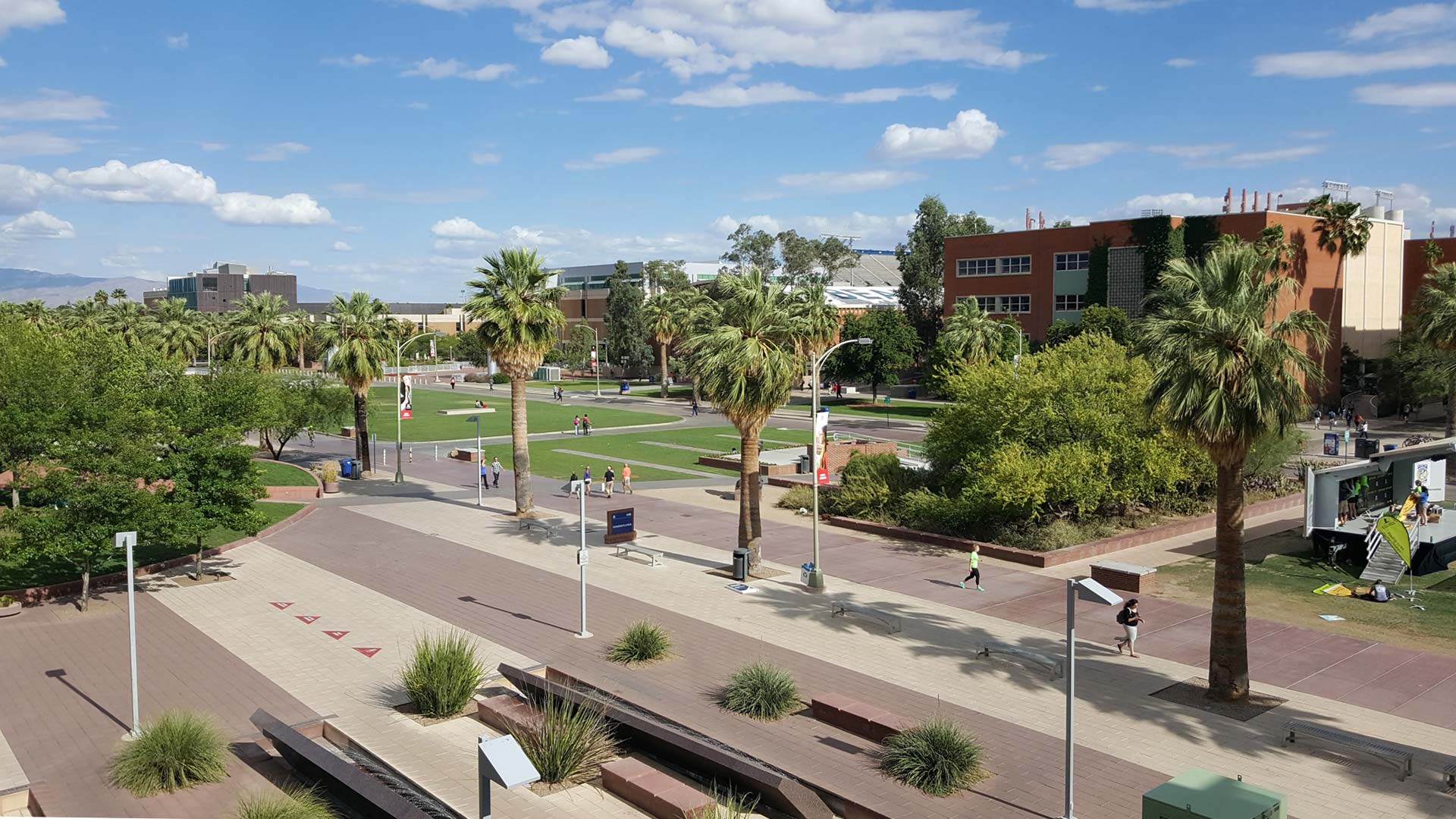 A view of the mall at the University of Arizona taken from the Student Union.
A view of the mall at the University of Arizona taken from the Student Union.
The University of Arizona's reputation for research has landed it a prestigious new program.
The United States Space Command, or USSPACECOM, has selected the UA as the inaugural member of its Academic Engagement Enterprise.
USSPACECOM, established the new program to increase research and innovation related to space and national security, advance space-applied research and innovation, and to engage and prepare future workers.
USSPACECOM,established the Academic Engagement Enterprise, or AEE, on Sept. 1 to engage the future workforce, advance its space-applied research and innovation programming, expand space-focused academic partnerships, and increase dialogue between the agency and academia.
"U.S. Space Command recognizes the incredible collaborative and mutually beneficial partnership opportunities the University of Arizona presents to our command and workforce," said Col. Doug Drake, U.S. Space Command Chief of Training and Education. "With the full spectrum of space-science programs and degrees, the University of Arizona and its faculty provide an academic standard for others to emulate. We look forward to leveraging the University of Arizona's scientific, technical and academic prowess in support of USSPACECOM as we meet our National Security and National Defense responsibilities."
UA's relationship with USSPACECOM will provide a forum for students, faculty and university partners to collaboratively address pressing challenges in human security, exploration, development and settlement of space.
"With our long and well-established leadership and expertise in planetary science, astronomy, astrophysics and space technology, the University of Arizona is perfectly positioned to partner with and support the U.S. Space Command in many areas of research, operations and student engagement," said University of Arizona President Robert C. Robbins. "It is an honor to be selected as the agency's first academic partner."
The United States relies heavily on its space assets, including GPS, weather forecasting and communication satellites to permit essential day-to-day activity, said Jekan Thanga, a UA associate professor of aerospace and mechanical engineering in the College of Engineering. The volume of space traffic is expected to increase with the introduction of mega-constellations – new space stations and on-orbit servicing facilities – into cislunar space, which is the space between Earth and the moon. If not properly managed, the increased traffic could stifle future growth prospects and limit access to space.
"The expected wider expansion into space will require mastery in living and working within cislunar space," Thanga said. "The university, through long experience-spanning space missions, technology and habitats, will be developing a multiprong education program and skillset that will equip USSPACECOM personnel tackle these challenges."
Thanga will coordinate with the university's various space-related entities to establish a formal, graduate-level program in space research, addressing needs identified by USSPACECOM.
"The University of Arizona has a rich history with NASA dating back to the 1960s, in which it has taken on some of the nation's toughest space challenges and delivered proven results to NASA," Thanga said. "In that same spirit, we seek to be problem solvers for the next wave of challenges that inevitably come with wider expansion into space."
The National Science Foundation Higher Education Research and Development survey ranks the University of Arizona as No. 1 in astronomy and astrophysics

By submitting your comments, you hereby give AZPM the right to post your comments and potentially use them in any other form of media operated by this institution.